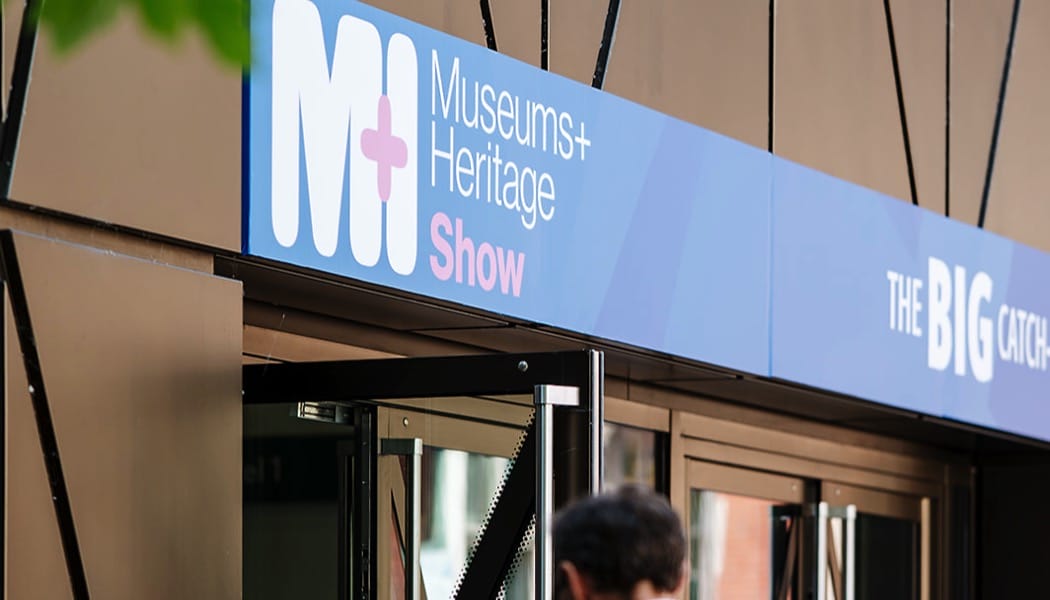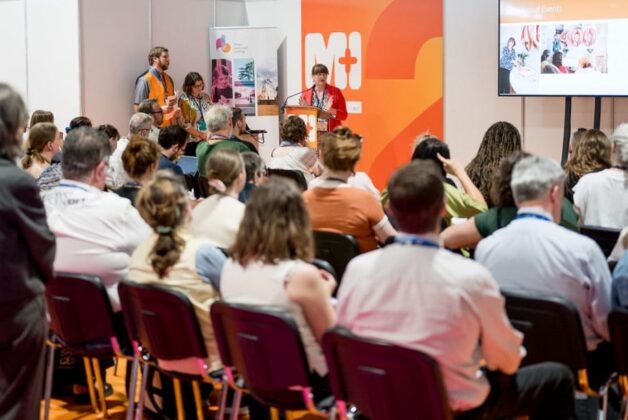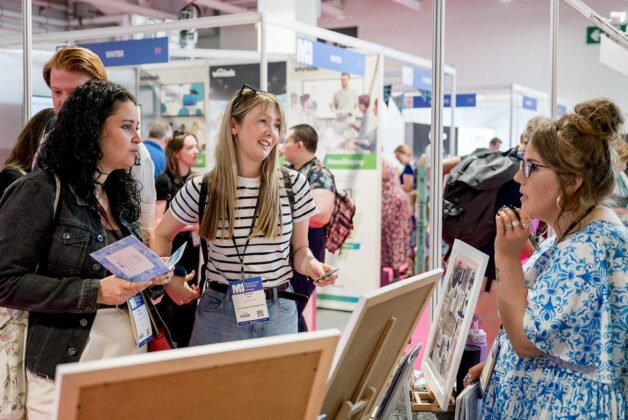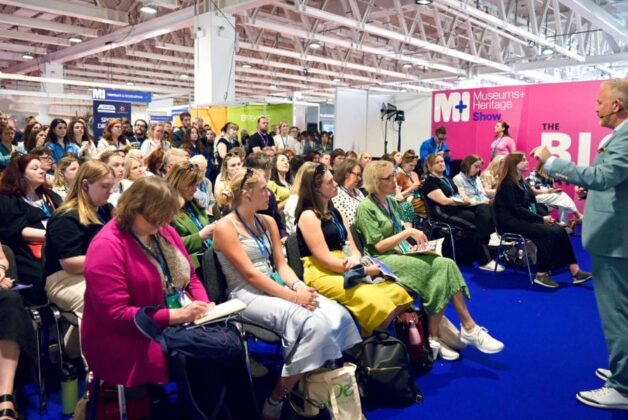Image: Hayley Bray | Words: Alex Rigotti
Museums + Heritage Show 2025 highlights included youth engagement challenges, civic museum funding strategies, pilot project innovations, and circular economy solutions for sustainable exhibitions.
Day Two of the Museums + Heritage Show 2025 built on yesterday’s focus on AI exhibits, sustainability, and digital innovation.
The second day tackled equally pressing issues facing the sector; youth engagement challenges, the future of civic museums following the government’s £20 million Renewal Fund, and circular economy strategies for exhibitions. Sessions ranged from the Kids in Museums Youth Panel’s employment concerns to the British Museum’s experimental interpretation projects.
Young blood in heritage spaces
At a session on the second day of the Museums + Heritage show, charity Kids in Museums reflected on the results of last year’s Youth Panel in a session with members Kellie Edwards and Hannah Grant. Last year, the panel wrote an open letter to 49 members of the National Museum Director’s Council, calling for museums to increase accessibility for young people, represent a wider range of people and create more early career job opportunities.
Edwards and Grant discussed the impact of that letter, sharing that 10 of the 49 members wrote back to the Youth Panel. These members included the Museum of the Home, the British Museum, the V&A, the National Portrait Gallery and the RAF Museum.
The pair observed that many of the museums resorted to “stock taking” instead of “responding to the issues we had raised”, with few addressing the lack of employment opportunities. Though Imperial War Museum noted they were planning to extend their work experience programme into a full training course, the panel wanted more evidence of “tangible and accessible” opportunities to put these skills into practise in the sector.
Additionally, Edwards and Grant highlighted how the responses “mirrored a lack of focus on young people as decision makers on museum boards”. They stated they knew of only three museums with trusteed under the age of 30, and whilst “some positive examples of co-creation and co-production” were given, the responses also acknowledged that “more could be done in this area”.
Affordability and accessibility to museums was also another issue that was “generally avoided” in the responses they received. Grant advised that “if we want to get young people into museums, we need to feel like we’re being considered – including our financial circumstances”. Although one museum flagged a reduced ticket programme in their response, the duo reported that scheme was hard to find online, further suggesting museums “make more noise about what they can offer for people as visitors”.
However, there were positives that the panel took away from the responses; the pair shared that the National Portrait Gallery stated they would “feed our discussion into audience development”. They also underscored the National Portrait Gallery’s £5 ticket offer for under 25s at weekends and the Tate Collective as excellent examples of increasing affordability for young people.
Meanwhile, the RAF Museum wrote they were looking to host careers with local schools and business fairs alongside work experience, whilst the Royal Armouries Museum shared they would look into how young people could be involved at their redevelopment in Leeds.
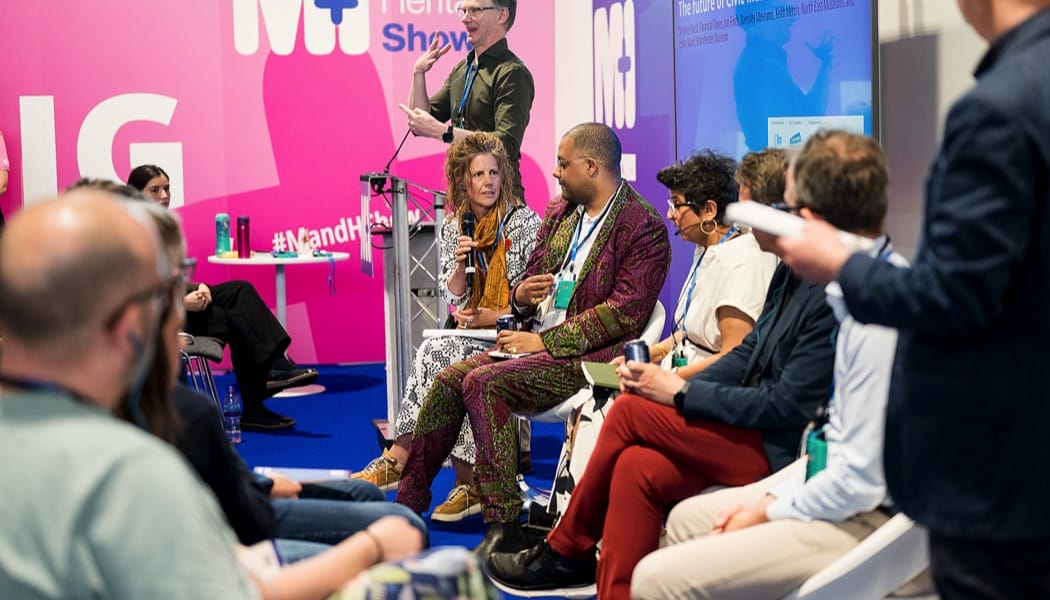
The future of civic museums
Following the unprecedented news of the government’s Renewal Fund announced last April – a whopping £20m – this session discussed the potential future of civic museums, along with the strategies they employed to achieve the £20 million funding.
This panel was chaired by Sara Wajid (Birmingham Museums Trust) and also consisted of Jon Finch (Barnsley Museums), Keith Merrin (North East Museums), Esme Ward (Manchester Museums) and Stephen Bush (Financial Times).
Finch, who helped campaign for the funding, shared that there were “many positive things” to take away from their lobbying. He emphasised the “need to focus on a small number of key issues”, and “communicating that succinctly and effectively over a period of time”.
Noting how every constituency hosts a civic museum, Finch said the “power of the mailbox” shouldn’t be underestimated, as many local MPs were encouraged to write to the current Secretary of State, Lisa Nandy. On a final note, he said that the museums and heritage sector “should be prepared to change – we need to think differently about how museums are delivered”.
Meanwhile, Ward praised the funding, but highlighted that more work needed to be done: “I’ve worked in museums for nearly 20 years – I’ve never seen consensus like that. It was moving to crisis in campaign mode. If you care about museums, you care about civic museums, they’re part of the ecology. £20 million is fantastic, but bloody nowhere near enough, frankly”.
With recent local elections seeing a rise in the Reform Party, panellists also agreed the role of museums should be evaluated. Bush said it would be “difficult for you all to navigate as trying to get the central government not to leave you behind”, warning that some local authorities believe museums are a “tool for woke to even talk about where the exhibits come from”.
Finch added that “we need to be alive to the political situation”, pointing towards Doncaster’s recent turn to Reform. Whilst he said the role of museums was “not to be political”, he said it was “our role to work with our communities and celebrate stories” – and the “huge benefit” of museums was to ensure “stories are told right from across the borough”.
Meanwhile, the panel also addressed rumours of the Department of Culture, Media and Sport being dismantled. Ward shared that she could “see the potential in devolution – but you’ve got to have a lot of flex”, adding: “That fundamental commitment to museums across all their work, you’ve really got to have that absolutely nailed.”
Various solutions were proposed to the problem; Bush suggested that museums should “find ways of becoming a positive case study” in order to avoid “always being the culture wars football”. He said that the “only time when people notice a museum in the paper is when it does something controversial, when there are interesting stories about how they’ve changed since the pandemic”.
Finally, the panel discussed the potential of philanthropic sources of income. Merrin argued that though “successive governments have told us philanthropy is the answer, in the northeast, that is not a big thing”. Whilst Newcastle’s Discovery Museum was recently awarded £200,000 by the Wolfson Foundation in January this year, Merrin warned that this was “prescriptive”. He also added that whilst they were “doing really well” in terms of earned and fundraised income, “the problem is our costs are going up and up – I’m not convinced it’s helpful to be chucking resilience money at the sector instead of rethinking how the sector is funded itself.”
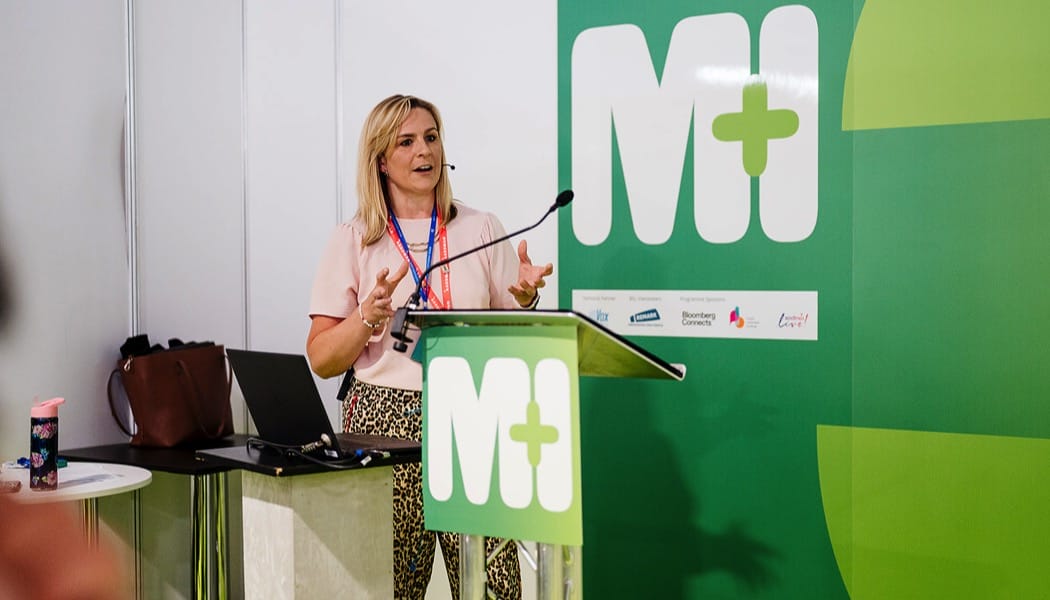
A great day at the @MandHShow – our @Heritage_NGOs stall has been busy and we’ve had some great conversations and speed networking was bustling. pic.twitter.com/EX6EwX92JF
— Lizzie Glithero-West (@heritage_lizzie) May 14, 2025
Taking off: how pilot projects can help museums
The British Museum also held a session exploring the power of pilot projects in experimental exhibit design, with insights from Stuart Frost (Head of Interpretation & Volunteers), Ben Townsend (Project Director), Eleanor Greenlead (Senior Creative at Journey) and Sarah Pollard (Associate at Ralph Appelbaum Associates).
The session used several installations at the British Museum to demonstrate how they experimented with two interpretive modes: imagination (bringing artifacts to ilife) and investigation (encourage visitors to take a closer look).
As an example, the Vindolanda tablets were enhanced by literally drawing out the voices in their messages. Large graphic quotes were displayed on a lenticular display, encouraging visitors to draw their attention to the tablets, whilst directional speakers played whispered voices bringing the tablets’ messages to life. They also formulated digital posters to “give contextual information and research before you go around and see the objects proper”, adding that “flexibility is important – if the objects completely change, we have a tempated system and we can tell different stories as needed.”
They also pointed towards their work with the Assyrian throne room depicting King Ashurbanipal II. They transformed the empty middle strip – a space representing a standard inscription that was not given back to the museum – as a graphic with key text highlighted in white, translated in a number of languages to “speak to international audiences”. The king was also highlighted in the reliefs by being etched onto a translucent panel to increase visual engagement.
Meanwhile, the Siege of Lachish was transformed by adding “dynamic illustrations to bring some of the action to life”. They also isolated a section of the frieze, reproducing it as a graphic in the back of a separate case and overlaid excavated arrowheads onto the background. Finally, they designed a layered soundtrack to the lion hunt friezes, using animation to deconstruct a complex scene of Ashurbanipal II slaying the lions.
The team noted a “generational divide between a traditional, curious audience who don’t really see a place for media, and the next generation who expect media”. Pilot projects, they argued, would “help the broader team establish what the role of media is in their particular museum – each of your museums has a digital signature that relates to your audience, your collection and what their expectations are”.

QR codes and audience engagement
In another session exploring how technology can enhance the museum experience, creative technologist Raül Leiva Olmo spoke about how museums can encourage visitors themselves to bring their own devices – transforming visitor experiences at a fraction of the cost of traditional AV solutions.
Olmo noted how the pandemic helped QR codes become “ubiquitous”, arguing that the codes “are not just links, they are portals – gateways to extend stories and deepen interactions”. Pointing to the Migration Museum, where visitors previously wrote their experiences on paper discs, Olmo shared that installing a kiosk with a dedicated QR code made this exhibit “more accessible, searchable and participatory”.
He also said that “physical comfort” played a big role in the success of the code, adding: “This kiosk area is narrow, and typing something emotional like an immigration story in a public space can feel awkward and uncomfortable. On your phone, you’re in your own space, your own language, your own privacy”.
QR codes, Olmo thus argued, could increase safety and user agency, allowing visitors to “engage on their own terms”. He also pointed out the potential applications for accessibility, such as pop-up menus with options like high-contrast mode and font size adjustment.
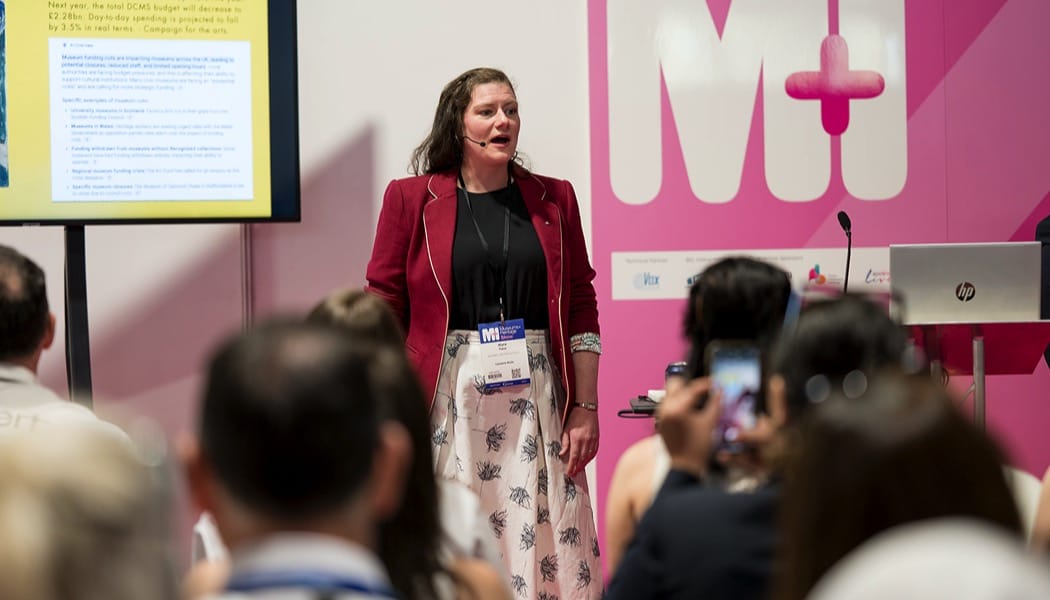
Towards a circular economy
Finally, we heard from Eric Langham from the Association for Heritage Interpretation on strategies for creating circular economies for exhibitions. Langham highlighted how circular economies could not only make heritage interpretation “more sustainable, equitable and collaborative”, it also “bridges the gap for institutions with limited budgets, unlocking access to high-quality interpretive resources”. According to Langham, museums such as the V&A and the British Museum have already expressed interest: “They can do more to support this economy, and they want to do more”.
He pointed toward the Shrewsbury Museum’s ‘Sun & Fire’ exhibition examining prehistoric Shropshire. Langham shared that the pilot exhibition was “planned, designed, bought and built for £40,000”, where recycled materials were “woven into the design” through “repurposed cases” and “reworked signography”.
Langham also urged the audience to think about the “afterlife of materials”, citing Leopold and Rudolph Blaschka’s glass models of jellyfish as an example. Once merely practical models for museums, the jellyfish are now considered artworks in their own right, and have been “accessioned in 40 different museums around the world”. This approach, Langham argued, would force us to “design for legacy”.
He acknowledged the difficulty of implementing a circular economy due to cost or object conservation concerns. “A lot of design practises are thinking about this a lot,” he said, but upon working in the museum and heritage sector, developing exhibitions sustainably is “actually difficult” despite institutions often agreeing that “being environmentally responsible is important from the top down”.
However, Langham pointed towards the need for a formal certification standard for museum exhibitions to adhere to in order to make sure object conservation was still a priority: “If we all had a standard to subscribe to and it was enforced by our funders, I think that’s the way to go.”
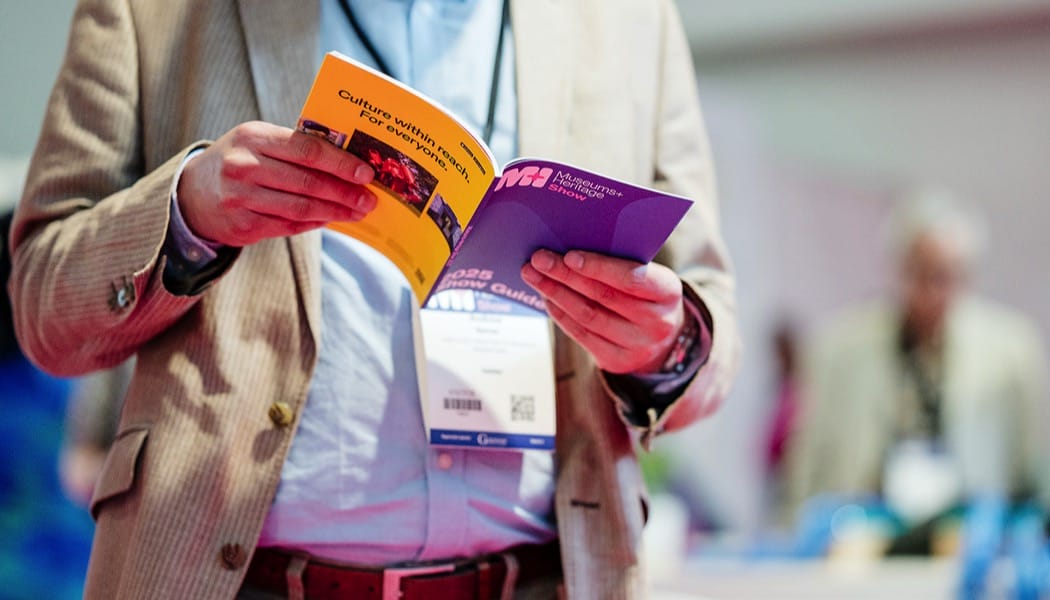
Missed out this year? There's always 2026...
Want to be first to get Museums + Heritage Show and Museums + Heritage Awards updates, before they’re announced anywhere else? Join the thousands already subscribed to our newsletter, which also features exclusive weekly heritage news and insights.
It’s all completely free, but only if you’re on the list…

